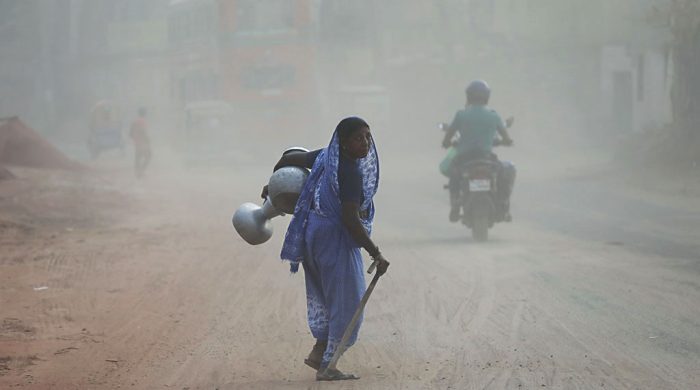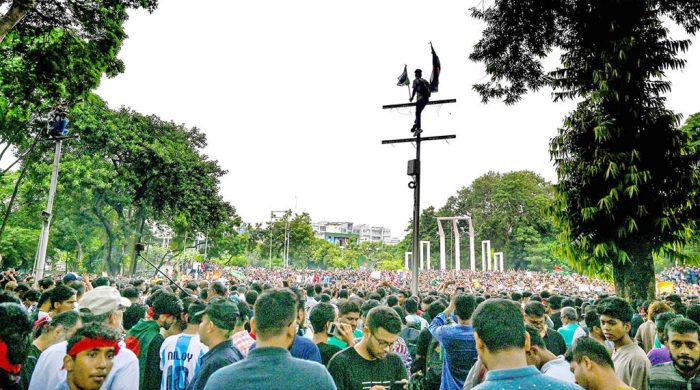Impact of Covid-19 on the SDG-3 (Good Health & Well Being) achievements

- Update Time : Saturday, January 15, 2022
- 112 Time View

The Sustainable Development Goals are the blueprint to achieve a better and more sustainable future for all. The leaders of 193 countries adopted the Sustainable Development Goals on September 25, 2015, following a long spell of extensive discussions and debates. Among the 17 Sustainable Development Goals, SDG-3 is the goal for worldwide Good Health to promote healthy lifestyles, preventive measures, and modern, efficient healthcare for everyone. SDG 3 is much more than the promotion, development, and protection of health. This goal on health and well-being is very much intertwined with all other goals, meaning the achievement of SDG 3 will have a huge influence on the fulfilling of other targets and vice-versa. The protection of health was already at the heart of the development agenda under the Millennium Development Goals (MDGs), with several goals concerned with health, including MDG 4: reduce child mortality; MDG 5: improve maternal health; and MDG 6: Combat HIV/AIDS, malaria and other diseases. Bangladesh had progressed a lot on the Sustainable Development Goals (SDGs) index score since the adoption of the 2030 global agenda in 2015, according to the Sustainable Development Report 2021. In terms of the human development index (HDI) of Bangladesh, which is the index used by the United Nations to measure the progress of a country, it was 0.632 points in 2019, leaving it in 133th place in the table of 189 countries published. On the 5th anniversary of the adoption of the Sustainable Development Goals – amid a pandemic radically transforming our economies and societies. The COVID-19 pandemic decelerated economic growth in 2020. The pace of poverty reduction slowed down, exports declined, inequality increased across several dimensions and the poverty rate in 2020 increased to 18.1 percent from 14.4 percent. This impacted the whole sector of development programs. SDG-3 focused on issues like reducing maternal mortality rates, fighting communicable diseases, universal access to sexual and reproductive care: family planning and education also come to a cropper condition.
SDG-3 ensures an increase in the average lifespan by focusing on how to reduce maternal and neonatal mortality. SDG-3 agenda 2030 is to reduce the global maternal mortality ratio to less than 70 per 100,000 live births and end preventable deaths of newborns and children under 5 years of age, with all countries aiming to reduce neonatal mortality to at least as low as 12 per 1,000 live births and under-5 mortality to at least as low as 25 per 1,000 live births by 2030 (World Bank). Bangladesh’s maternal mortality rate for 2016 was 186.00, a 7% decline from 2015. Bangladesh’s maternal mortality rate for 2015 was 200.00, a 6.54% decline from 2014. So in this case Bangladesh was doing great before the pandemic. According to UNICEF in Bangladesh, an estimated 2.4 million babies were born under the shadow of the COVID-19 pandemic. The country ranks at number 9 in terms of the highest expected number of births for 9 months from the date of the pandemic declaration on 11 March.
Even though there is no significant change in the maternal mortality ratio and neonatal mortality rate, an analysis of data in the Directorate General of Health Services dashboard shows that since the beginning of the COVID-19 crisis, there is a significant reduction in the uptake of maternal and newborn health services from the health facilities. Only 33 district hospitals in Bangladesh are performing all key functions of emergency obstetric care out of 63. SDG-3 also ensures reducing one-third of premature mortality from non-communicable diseases through prevention and treatment and promote mental health and well-being and equal distribution of vaccines without any discrimination.
In the initial phase of the coronavirus disease 2020 crisis, Bangladesh’s health systems faced competing demands to respond to the pandemic. Healthcare preparation and capacity against COVID-19 might explain the pandemic situation in Bangladesh more precisely. The coronavirus testing rate in Bangladesh (0.34%) is the second-lowest in South Asia only after Afghanistan, a war-torn nation (Table 2). Its main reasons could be the limited number of testing laboratories (56 laboratories) and kits, and their uneven distributions across the country, expensive coronavirus tests in private medicals (USD 50–60/test), the fewer number of medical workers, and an unregulated testing system (elites get preferences). Moreover, many testing kits were preserved by corrupt businessmen to initiate an artificial crisis. Medical facilities, such as beds, intensive care units, and ventilators, are far fewer than the required amount in both government and private hospitals.19 Therefore, to manage a seat in the country’s finest hospitals, patients often need to have connections. Also, many patients prefer to remain at home fearing maltreatment in hospitals. A report reveals that 79% of patients stay at home and get treatment over the phone.20 In Bangladesh, only 3.05 physicians and 1.07 nurses serve every 10,000 people on average,5 of which is insufficient for the pandemic situation. Furthermore, medical workers were provided with lower-quality medical equipment, such as masks and personal protective equipment. Consequently, many doctors got infected and some died, making the doctors’ mortality rate of Bangladesh the highest in the world.
This situation may be controlled by taking a few steps. The information gap was huge during the Covid-19 period. People heard a lot of baseless news from different sources which made people more confused. Corruption in the health sector also made people helpless during this vulnerable period. Reducing corruption is mandatory as this will help improve the proper utilization of allocated resources. More tests should be conducted to identify the infected persons to provide them with better treatment. Our hospitals are not prepared yet to face a pandemic situation. There isn’t enough oxygen, beds, and medical equipment there. They should be well equipped with updated and efficient medical supplies such as oxygen and medications to provide supportive treatment for COVID-19. And our frontline, doctors, and other medical workers weren’t treated well during the pandemic. They were at high health risk all the time during the pandemic periods. These front liners must be protected from infection. Moreover, vaccination can reduce the spreading rate of any contagious diseases. So, people from all sectors, especially those who are related to health services should be vaccinated properly. Covid-19 pandemic is an unpredictable situation which has disrupted efforts to achieve the 2030 agenda for SDGs. But then again this pandemic pause has given us an overall review of where we’re standing and what we need to change and which place we should reprioritise. It has exposed the fundamental weakness in the healthcare service of our country. Better policy decisions and implementation by the international organization as well as by the government is needed for revamping SDGs where the health aspect of SDGs can be the entry point.
The writer is a student of Dhaka University



















